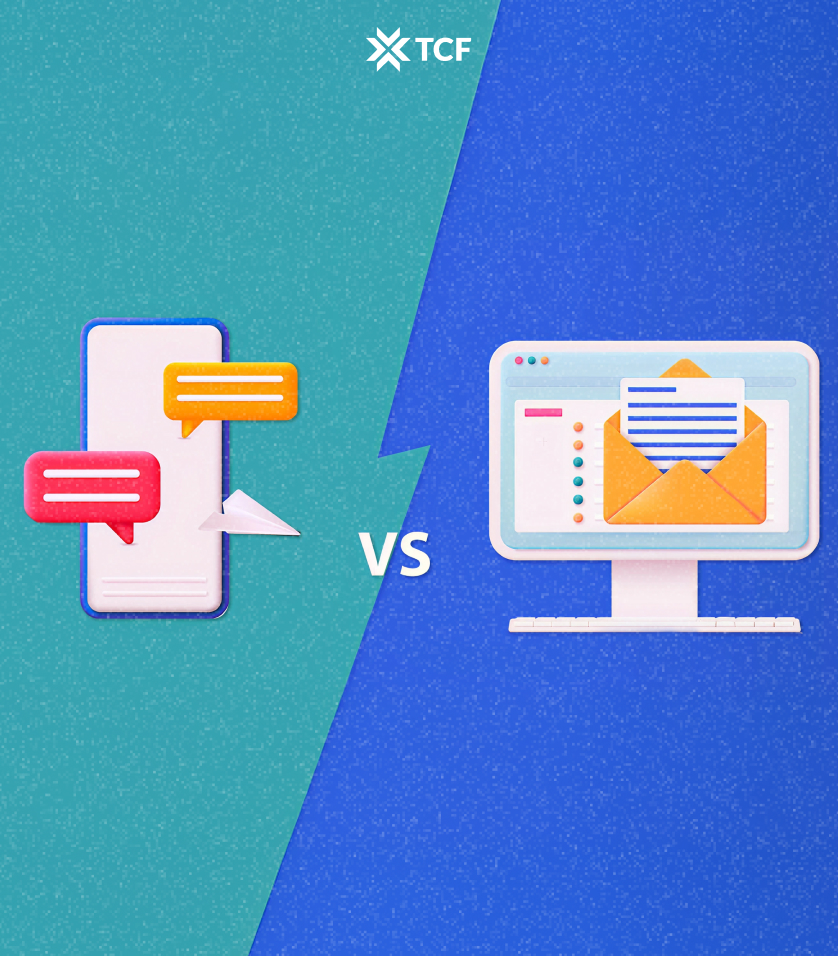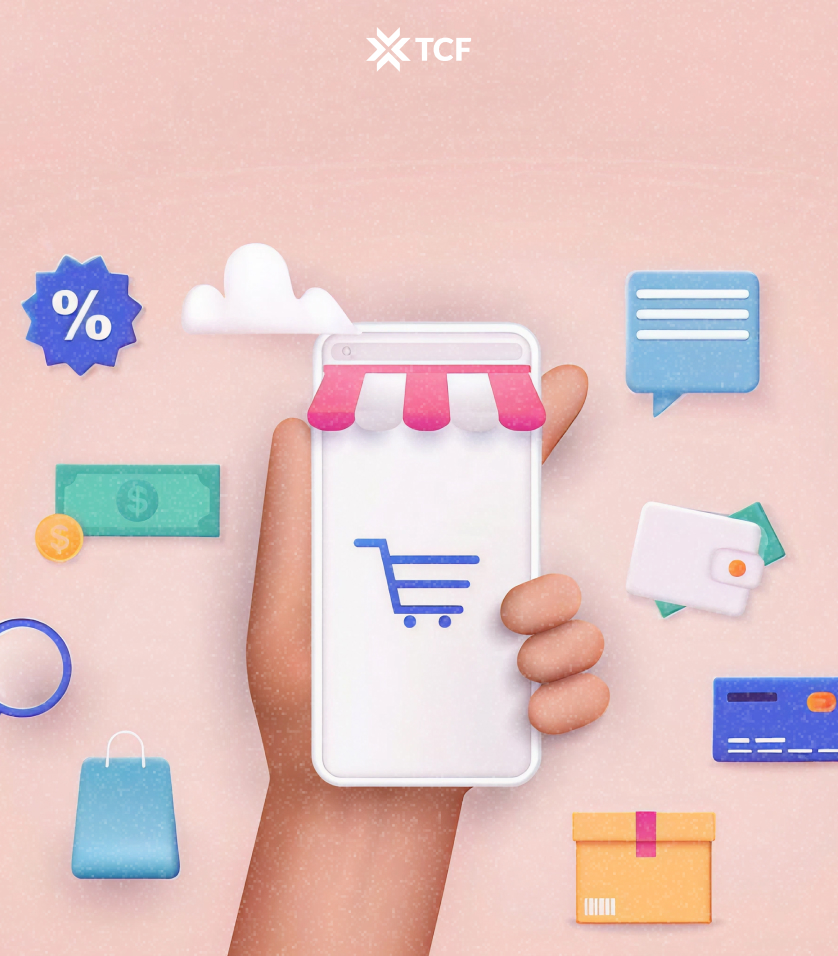Marketers love a good rivalry. Coke vs. Pepsi. Organic vs. paid. And now, email vs. SMS.
Both claim the crown for engagement. Both drive sales in their own way.
Maybe you’re rethinking your retention strategy and wondering where to double down. Maybe you’ve seen quick wins from one channel and want to know if the other can match it. Or maybe you’re planning next quarter’s campaigns and need clear data to guide your strategy.
In this article, we’ll bring that clarity. You’ll see how email and SMS compare across cost, engagement, and conversion, what real brands are doing to get measurable lift, and what those insights mean for your next move.
[[cta5]]
Quick Answer: Email or SMS, Which Performs Better?
If you want the short version, here it is.
Email wins on reach, depth, and cost efficiency. It’s built for nurturing customers over time, telling stories, and scaling engagement without blowing up your budget.
SMS wins on immediacy. It’s personal, direct, and gets read within minutes, making it perfect for quick actions, reminders, and limited-time offers.
Neither channel replaces the other, but one may fit your goals better depending on your audience, timing, and resources.
Let’s break down the numbers and see how they actually work for you.
Email Marketing
Email marketing lets brands talk directly to their customers in a space they already check every day: the inbox. It’s not a flash-in-the-pan kind of channel; it’s built for lasting connections. From welcome sequences and product tips to loyalty rewards and seasonal drops, email gives you room to speak in full sentences, tell stories, and build real brand familiarity over time.
Why Email Marketing Works
Email might not be flashy, but it has a few unfair advantages that keep it at the heart of every strong marketing strategy.
- It’s low-cost by nature. You can reach thousands for the price of a single text blast, making it one of the most budget-friendly tools you’ll ever use.
- It scales without stress. Costs usually rise with your list size, but automations handle growth without adding workload. New subscribers enter your flows automatically, keeping your efforts consistent even as your audience expands.
- You’re in control. Your list, your data, your timing. No evil algorithms deciding who sees your message.
- It builds loyalty quietly. Email has room for value (stories, tips, exclusives) that make people want to keep hearing from you.
- It’s data gold. Every open, click, and conversion tells you exactly what resonates.
Common Email Marketing Challenges
Every strength comes with trade-offs, and email has its fair share. Some are manageable, others take consistent attention.
- Inbox fatigue is real. Even the best subject lines can get lost in a sea of “limited time only” deals.
- The payoff takes patience. Email rarely sparks instant sales. It wins by staying consistent.
- It needs maintenance. Testing, deliverability checks, and creative refreshes aren’t optional if you want to stay visible.
When Email Delivers the Best Results
This is where email really finds its rhythm, moments that call for context, storytelling, and steady engagement.
- Welcome and onboarding emails that educate customers about your products or values.
- Ongoing education series that share how-tos, styling ideas, or product care tips to keep customers engaged.
- Product launches and updates that give you space to tell the story behind new releases.
- Nurturing flows that mix value-driven content with soft conversions to keep relationships warm between purchases.
- Reactivation campaigns that bring lapsed customers back with something more personal than a discount code.
Email is the steady hand in your marketing strategy. It builds trust, reinforces value, and keeps your brand top of mind between every purchase. Smart optimization strategies like A/B testing subject lines or refining automation timing can make it perform even better over time.
SMS Marketing
SMS marketing is all about urgency and access. It skips the scroll and lands where attention is highest: the lock screen. Every message is short, personal, and hard to ignore. When done right, SMS turns casual buyers into repeat customers by meeting them exactly where (and when) they’re most likely to act.
Why SMS Marketing Works
SMS is bold by nature. The message shows up, gets seen, and drives movement in a way few other channels can match.
- It’s instant. Most texts are read within minutes, giving you immediate reach when you need it most.
- It’s hard to miss. It lands right on their screen, and with average screen time pushing eight hours, trust me you’ll get seen.
- It feels personal. Texts mimic the way people talk to friends, which helps brands feel closer and more human.
- It amplifies urgency. Perfect for moments when speed sells:flash deals, low-stock alerts, or last-call reminders.
Common SMS Marketing Challenges
For all its speed, SMS comes with limits. Using it well means knowing when to hold back and how to stay welcome in your customer’s inbox.
- It’s pricier. Every text adds up, especially as your subscriber list grows.
- Space is tight. You have roughly 160 characters to make an impression, so there’s no room for storytelling.
- It needs clear consent. Regulations are strict, and every message must be permission-based.
- It’s easy to overdo. Too many texts, and customers start to tune out or opt out.
When SMS Delivers the Best Results
SMS belongs to moments that matter. It’s the kind of channel you reach for when timing, tone, and precision are everything. Here are some examples:
- Flash sales and limited-time offers that reward quick responses.
- Restock alerts and low-inventory updates that drive scarcity-driven purchases.
- Order confirmations and shipping updates that keep customers in the loop after checkout.
- Post-purchase reviews and loyalty prompts that maintain engagement between sales.
- Abandoned cart nudges that bring shoppers back before they lose interest.
SMS is the spark in your messaging mix. It cuts through distraction, moves fast, and keeps momentum alive when timing makes all the difference.
Email vs SMS Performance Comparison
Numbers reveal what experience already suggests. Email and SMS both drive results, each in their own way. One builds depth and scale, the other delivers speed and focus. Knowing how they perform helps you plan your time, budget, and strategy with purpose.
What the Data Says About Email and SMS Performance
The chart highlights two key truths about customer behavior.
First, attention is immediate, not lasting. The 90-98% SMS open rate looks unbeatable, but that engagement fades fast. Customers act within minutes or not at all, which makes SMS ideal for time-bound campaigns. Email’s lower open rate hides its advantage in longevity: messages live in inboxes, get reopened, and keep driving clicks days later.
Second, ROI favors consistency over speed. Email’s $36-$42 return on every dollar spent outperforms SMS in most cases, even with slower response times. The cost per message is so low that even modest conversions deliver strong margins. SMS can outperform when urgency leads to instant sales, but those spikes depend on tight segmentation and smart timing.
The takeaway is that scale and cost efficiency belong to email, while velocity and immediacy belong to SMS. Brands that align each channel with its strength see higher total lifetime value, not from one outperforming the other, but from using both for what they do best. Now let’s see how.
How to Combine Email and SMS for Bigger Impact
Email and SMS each deliver strong results on their own, but together they can multiply customer lifetime value. The key is coordination: timing, sequencing, and using each channel where it naturally performs best.
The Unified Flow
A unified flow keeps the customer moving without overwhelming them. Each touchpoint has a specific purpose and builds on the last.
Step-by-step example:
- Post-purchase email (education): Share product care tips, setup guides, or complementary use cases to reinforce the purchase.
- Follow-up SMS (cross-sell offer): Suggest a related product or accessory with a short, friendly message and clear CTA.
- Email (testimonial or social proof): Highlight real customer experiences or reviews that validate the next step.
- SMS (exclusive discount): Send a quick, personalized message that feels like a reward, not a routine promotion.
This kind of rhythm strengthens both channels. Email educates and nurtures, SMS triggers immediate action.
Segment Smartly
Smart segmentation ensures every message feels intentional. Use behavioral data, purchase frequency, and AOV tiers to guide which channel takes the lead.
- High-value customers: Send exclusive previews or loyalty perks via SMS, then follow up with detailed offers by email.
- One-time buyers: Lead with educational emails to build trust before sending promotional texts.
- Lapsed customers: Trigger a brief reactivation SMS before a win-back email series.
When both systems share data, every message feels connected rather than repetitive.
Avoid Channel Overlap
The biggest mistake is over-communicating. When both channels talk at once, messages compete instead of reinforce. Set clear frequency limits and define when each channel should step in.
Best practices:
- Email: Two to four messages per week, depending on list activity and content strategy.
- SMS: One or two messages per week, ideally reserved for time-sensitive or high-value moments.
Always leave at least 24 hours between an email and an SMS on the same topic. Balanced communication keeps engagement high without causing fatigue or opt-outs.
Email and SMS Compliance Rules Every Brand Should Know
Strong performance means nothing if messages never reach customers. Every email and text must follow clear consent and timing rules to stay compliant and trustworthy.
- Opt-ins first
Collect consent separately for email and SMS. A single checkbox does not cover both. Use clear language that explains what people are signing up for and how often they can expect to hear from you.
- Easy unsubscribes
Every message needs a simple, visible way to opt out. “Reply STOP” for SMS and “Unsubscribe” links for email keep your list clean and your reputation strong.
- Timing matters
Respect quiet hours and regional laws. In the U.S., messages must comply with the TCPA for SMS and the CAN-SPAM Act for email. Keep texts between 8 a.m. and 9 p.m. local time, and avoid weekend blasts unless it’s a major event.
- Clean lists, high deliverability
Remove inactive contacts, avoid spammy keywords, and send consistently to maintain sender reputation. Healthy lists improve engagement and keep messages out of the spam folder.
Compliance builds trust. It tells customers your messages belong in their inbox and on their phone because they chose to receive them.
Email or SMS: The Decision Framework
At this stage, everything comes down to direction. If you’re deciding where to focus next quarter or for your next campaign, the right answer depends on your goals, team size, and budget.
- To build awareness and loyalty, prioritize email.
Email gives you the room to tell stories, share tutorials, and stay consistent without overwhelming your audience. It’s the best channel for nurturing trust and keeping your brand familiar between purchases.
If you have extra capacity, layer in SMS to send occasional loyalty perks, product updates, or check-ins that make customers feel seen without flooding their inbox.
- To drive fast conversions or promote flash sales, lead with SMS.
SMS gets immediate visibility and fast clicks when timing matters most. It’s ideal for limited-time offers, restocks, or urgent drops that thrive on attention.
If you can support it with email, build anticipation ahead of the sale or send follow-ups afterward to stretch the results beyond the moment.
- To recover abandoned carts, start with email.
Email lets you reintroduce value through visuals, testimonials, or product details that rebuild intent.
If you have automation tools or bandwidth to expand, add a short SMS reminder for customers who haven’t opened the email within 24 hours. The combination catches both the browsers and the impulse buyers.
- To re-engage lapsed customers, begin with SMS.
A quick text reactivates attention, reminding customers why they liked you in the first place.
If your system allows for it, follow up with a personalized email featuring a small incentive or update. The text breaks the silence; the email rebuilds the story.
- To launch new products or collections, let email lead.
Email gives you space for visuals, benefits, and storytelling that generate anticipation.
If you have the team and tools to manage both, use SMS to announce when the product is live. The combo creates a smooth funnel from awareness to action.
How to Apply It
Before you finalize your setup, outline your goals, team capacity, and automation tools. You don’t need both channels firing at once. The strongest systems start simple, then scale as your team grows.
Map your customer journey, assign each channel a purpose, and measure performance. Once every message has a clear purpose, your communication feels cohesive, deliberate, and built to last.
Conclusion
At the end of the day, both channels have earned their place. Email keeps customers connected through consistency and value. SMS delivers immediacy and action when timing matters most. The real win is knowing when to use each one with intent.
Start with what fits your goals and bandwidth. If your focus is loyalty and education, email will do more heavy lifting for less cost. If you’re chasing fast conversions or last-minute campaigns, SMS will move the needle faster. And when your team and tools can handle both, combine them thoughtfully as the overlap is where repeat purchases grow.
The choice is yours, but the strategy is simple: use the right message, in the right moment, on the channel that meets your customer where they actually pay attention.
[[cta5]]






.png)


.png)


.jpg)

.jpg)